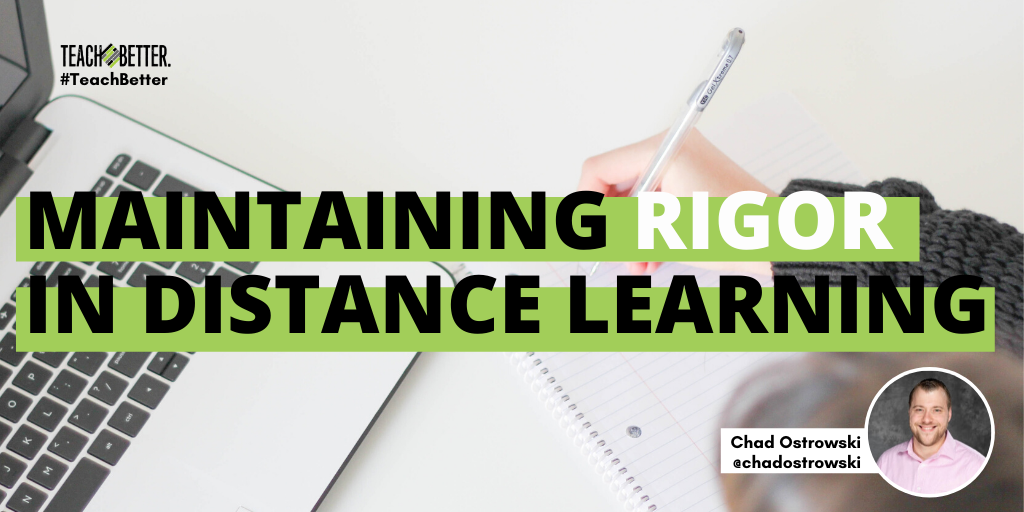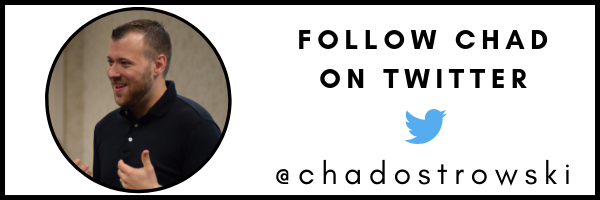TL;DR:
- It’s okay to put out activities quickly when first switching to a distance learning model.
- Once you’ve made the shift, take time to ensure you’re promoting deep thinking and learning.
First and foremost…
Maintaining rigor is something that’s absolutely important, but may not be the immediate focus or a top priority of your planning. As you shift or begin distance learning, that’s totally okay.
Depending on the reasoning for the shift (emergency, snow days, illness etc.) your first thought might just be: “I need to get SOMETHING ready and set to go so my students can continue learning.”
This is absolutely normal. However, once you settle in, reflecting on things like the DOK level of your assignments or the rigor you’re providing your students is important.
It can be the difference between maintaining learning and fostering continued growth and progress. There are a few things you can do to not only increase the rigor of learning happening, but maintain a productive challenge for your students, which will keep them more engaged.
There are a few things you can do to not only increase the rigor of learning happening, but maintain a productive challenge for your students, which will keep them more engaged. Click To TweetRethink Worksheets & Packets
One of the most common things I see with distance learning is a gut reaction to completely shift to worksheets and packets. It’s like somehow we forget all the great types of questions and activities we love so much in our classrooms. We reduce our planning to its lowest common denominator.
This is understandable when first making the shift, especially if you’re on a time crunch. But as we settle into things it’s so important to open up our toolbox and apply it to the remote or digital environment we now teach.
Try to avoid “filling time” with redundant or low level tasks. Instead, you can provide fewer high level or scaffolded tasks that provoke more thinking. One way to do this is to analyze the types of questions your asking using Depth Of Knowledge (DOK).
Are all of your questions simple memorization or regurgitation of facts (DOK 1) ?
Are you asking why something is happening (DOK 2)?
Having students compare and contrast (DOK 3)?
Maybe you’re even having them synthesize and create their own ideas or artifacts of understanding (DOK 4).
If you have a worksheet or valuable activity, consider posing higher level questions or using it as a baseline to build on.
[scroll down to keep reading]

Focus on Quality Over Quantity
Rigor can mean different things to different people. But one thing it absolutely does not mean is “more work”.
The idea that rigor just means students working more or doing more things is absolutely and utterly false. Rigor in lesson design should come from higher level thinking, comprehension, and actions on the part of the learner. Not more low level tedious work disguised as “rigor”.
I can’t stress this enough, especially within a distance learning environment. Using smaller but more open ended and higher level activities will actually be more manageable for the learner and get you greater results.
This doesn’t mean that you shouldn’t scaffold these assignments or that you won’t have to help guide students remotely as they work through them.
It does mean you’ll have fewer or maintain the “normal” amount of assignments. The focus should always be learning, as opposed to filling a certain amount of time. This is also the foundation of many mastery learning frameworks and competency-based instructional practices.
Digital Does NOT Mean Disconnected
Transitioning to an online medium for instruction does NOT mean that you have to be disconnected from your learners. You also don’t have to assume that they won’t need your help.
One of the most important aspects of high rigor distance learning is the available teacher that can help facilitate thinking and learning during the work. Many times we assume that because we are instructing remotely, all things must be done independently and alone.
I absolutely agree the this may be more true in a distance learning environment, but doesn’t have to always be the case. Providing ways for students to reach out and clear lines of communication throughout the learning, assessment, and work can be a huge benefit and allow the same fostering of thinking and motivation that exists in a physical space.
So take a deep breath, relax, and let’s start reflection on the quality of the learning happening in our digital environments just like we do in our physical ones.
About Chad Ostrowski
Chad Ostrowski is the co-founder of the Teach Better Team, and creator of The Grid Method. He is also a co-author of the Teach Better book. But Chad is a middle school science teacher at heart. He now travels the country sharing his story, working with teachers, schools, and districts to help them to reach more students. Chad is also a member of the Teach Better Speakers Network.



